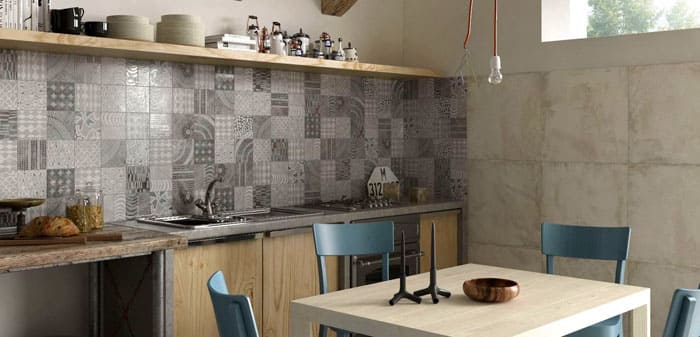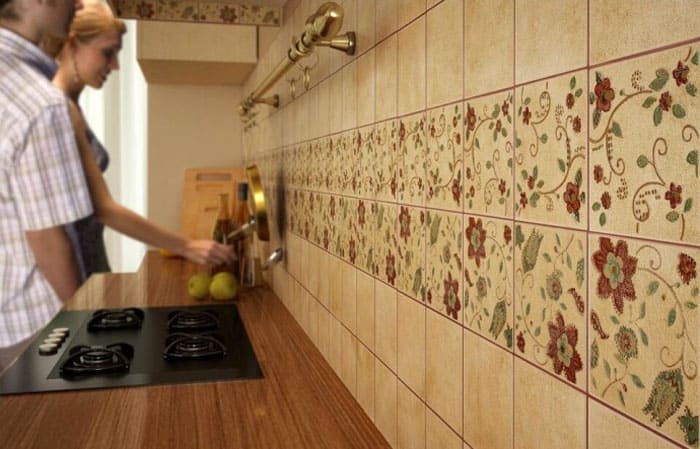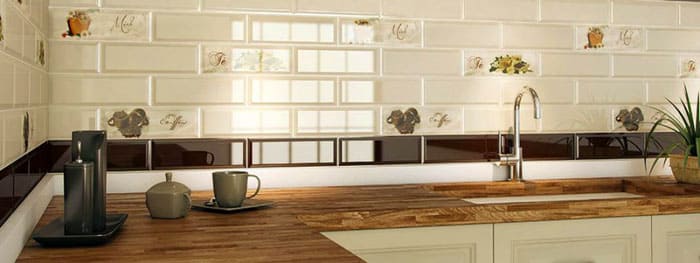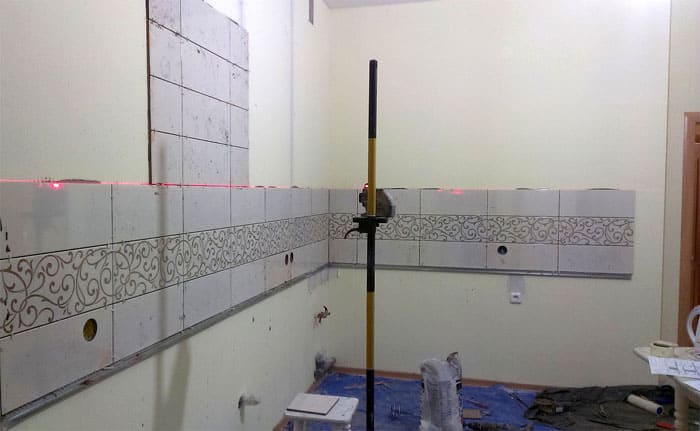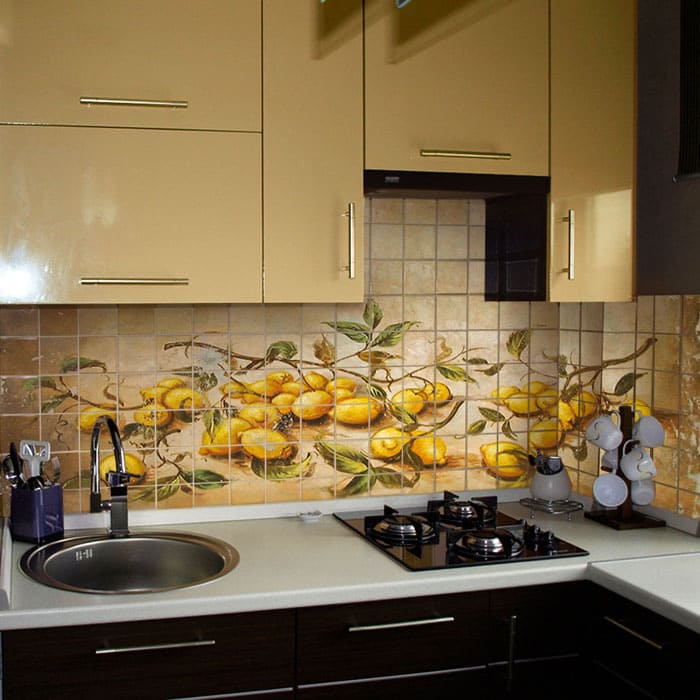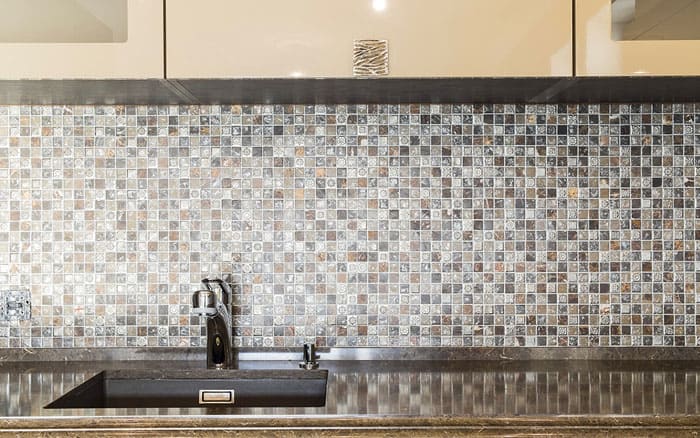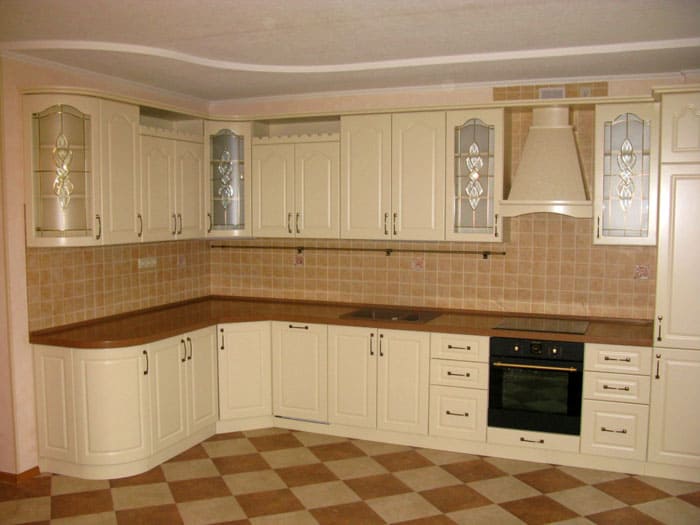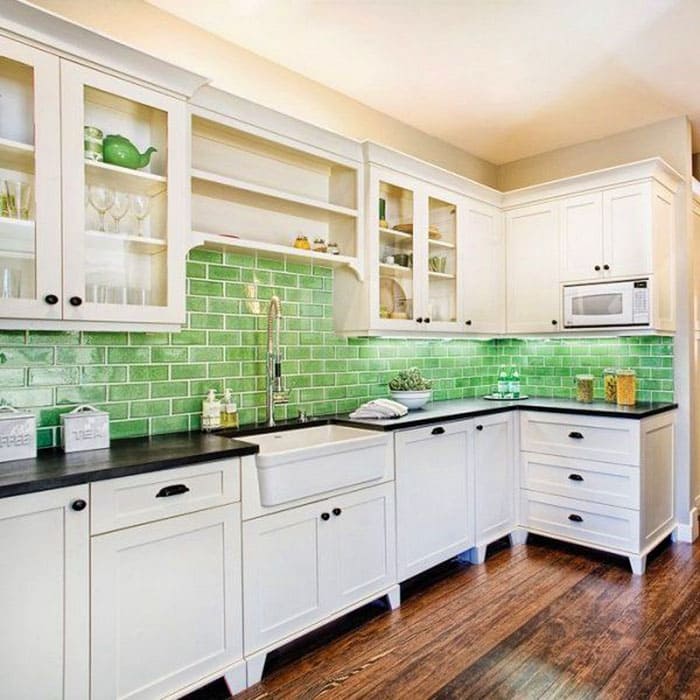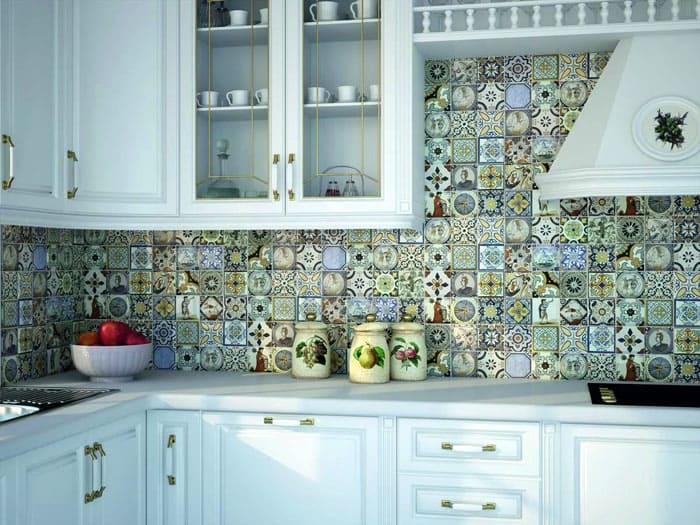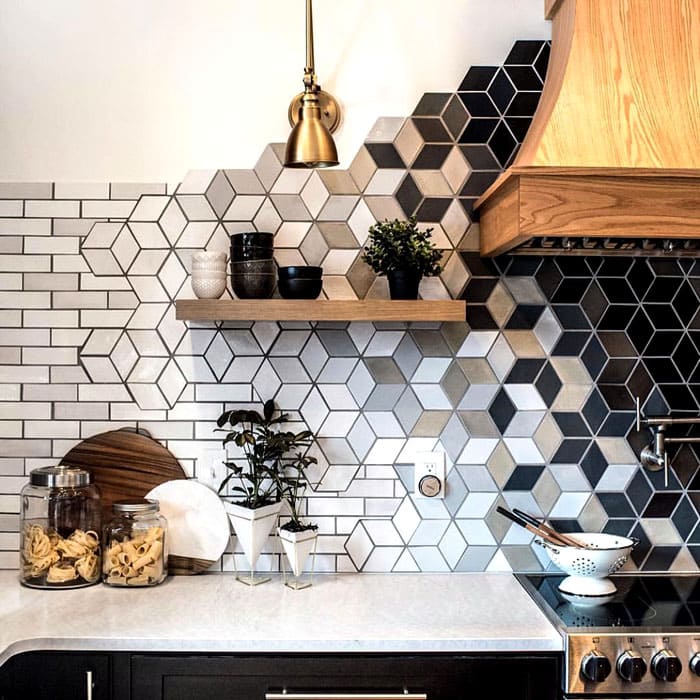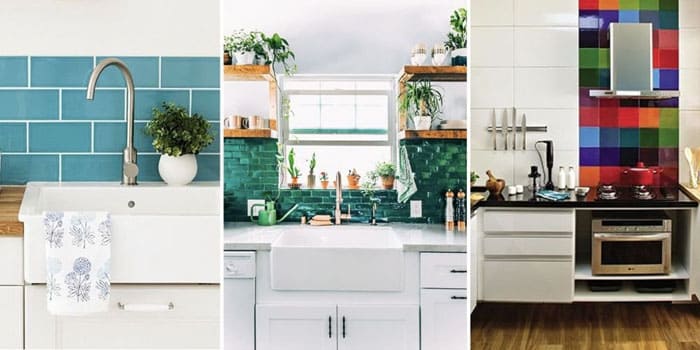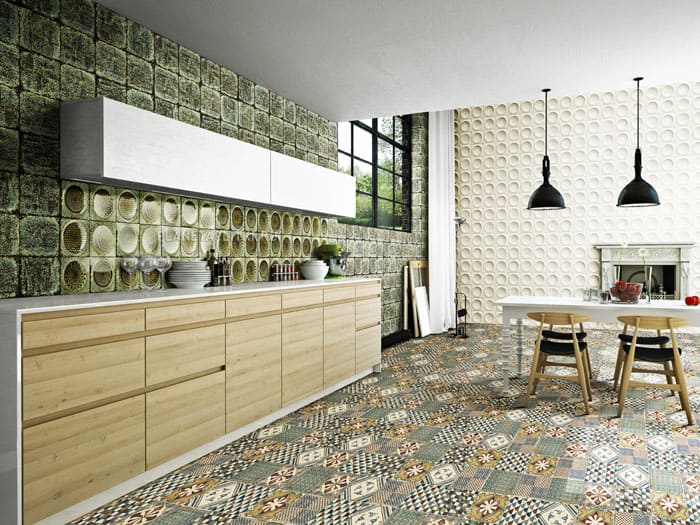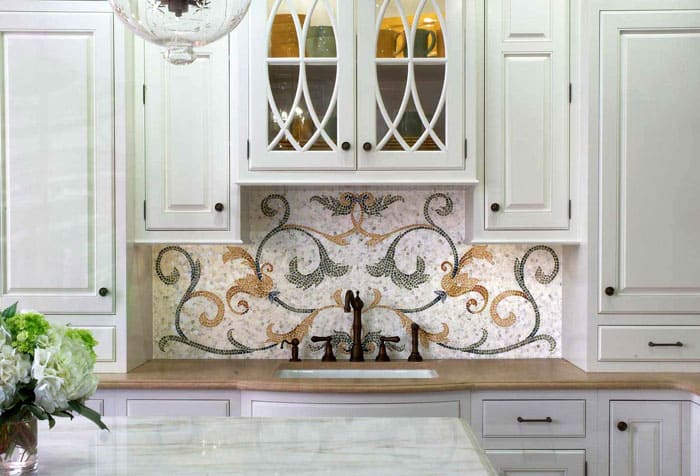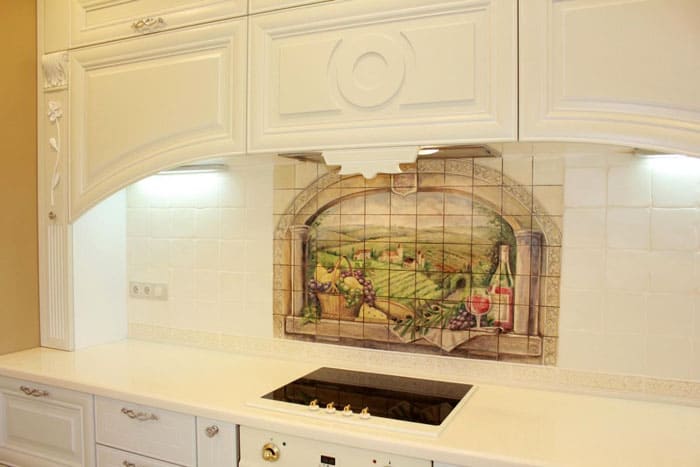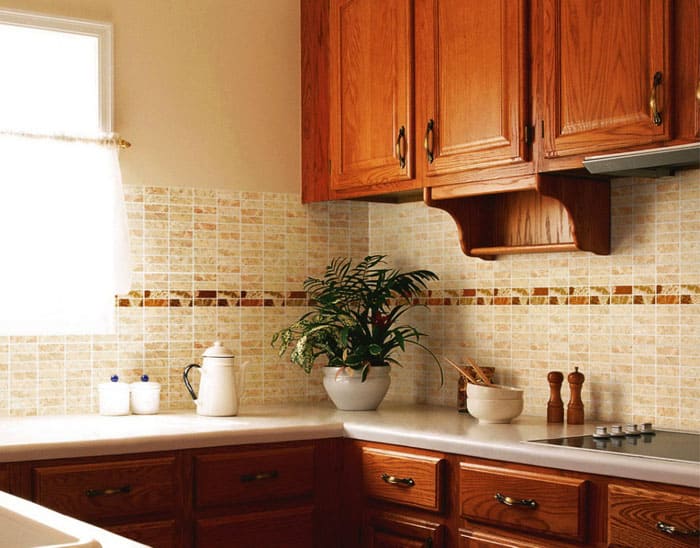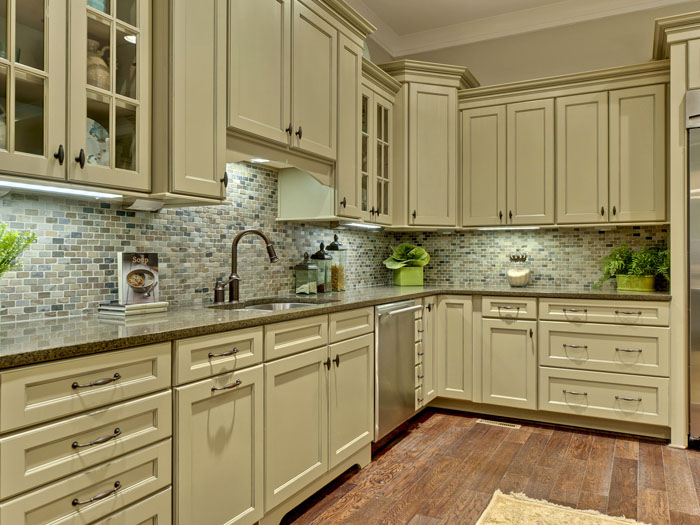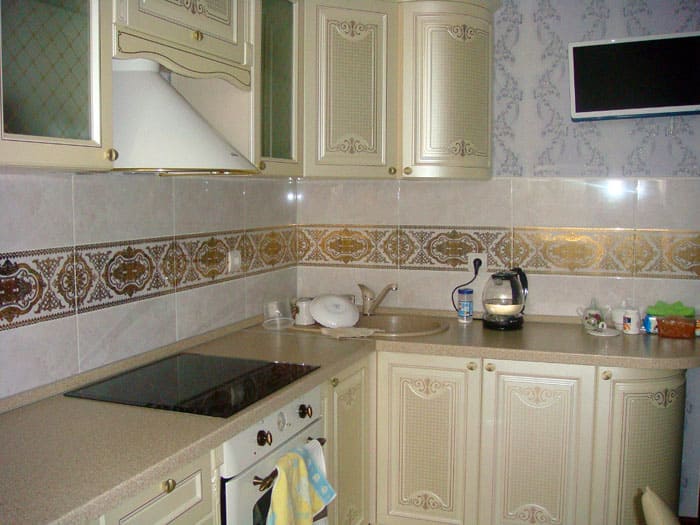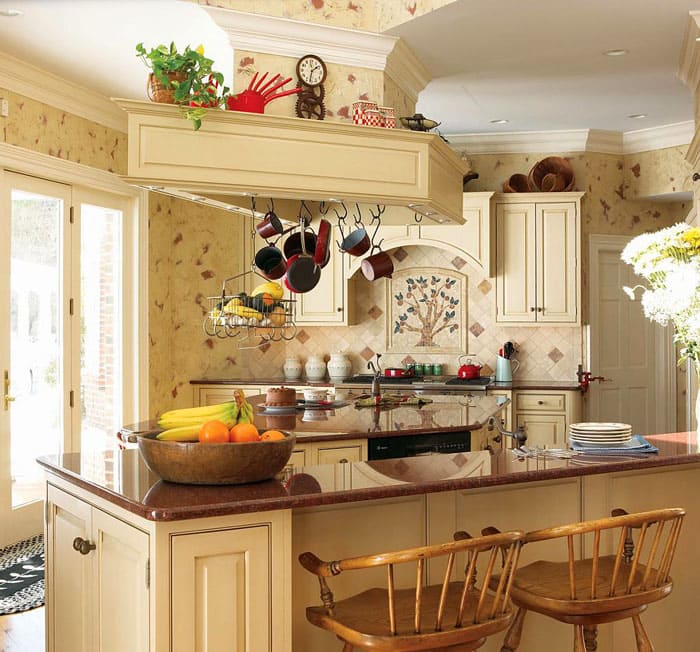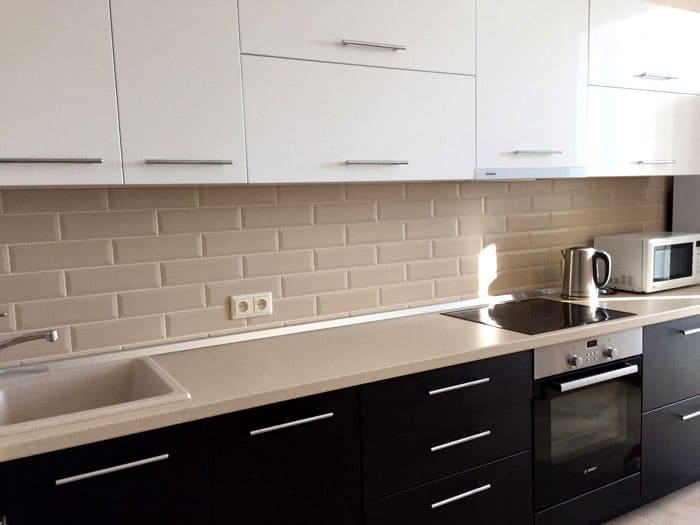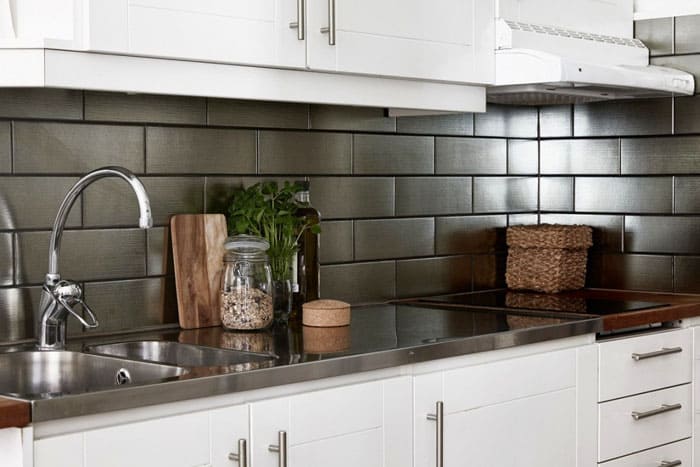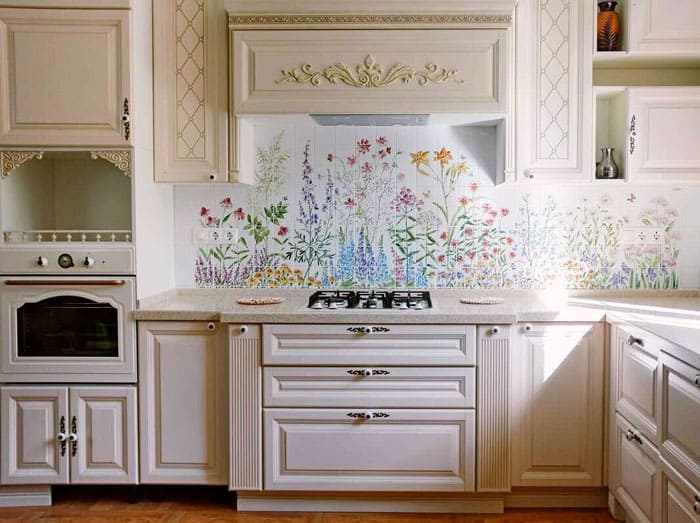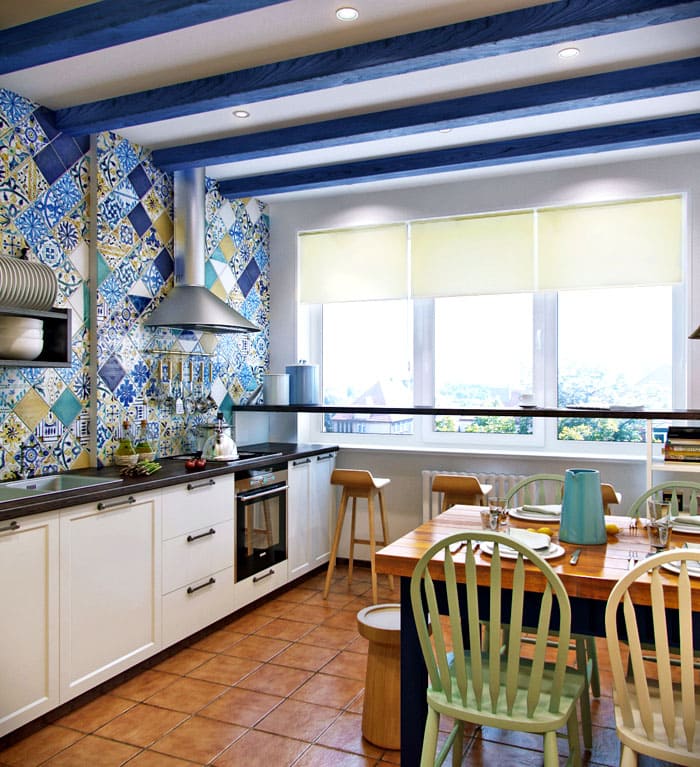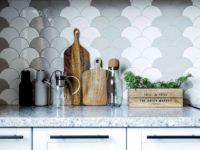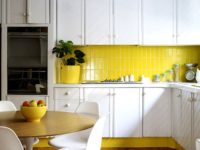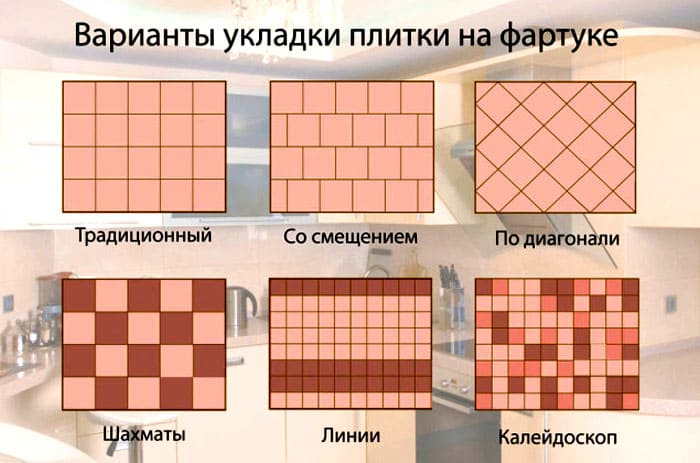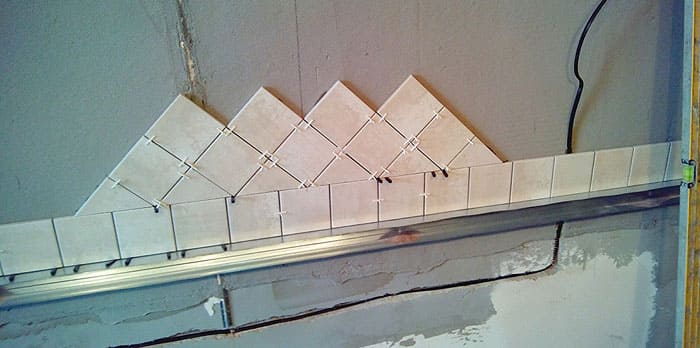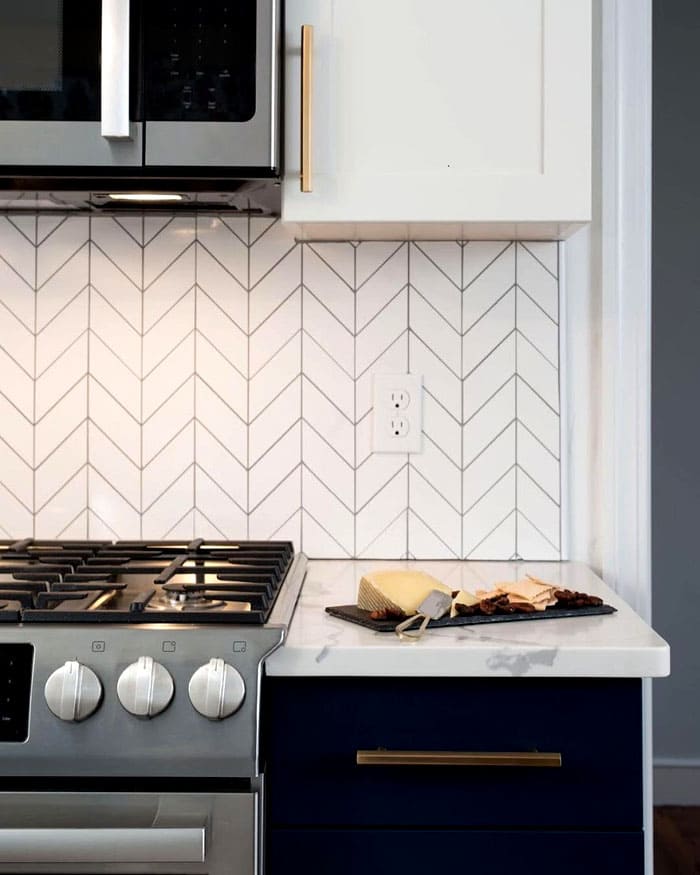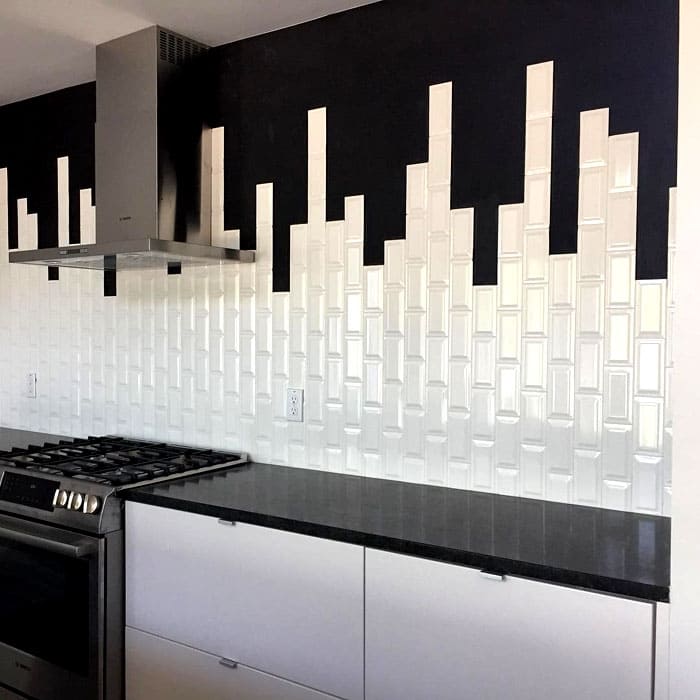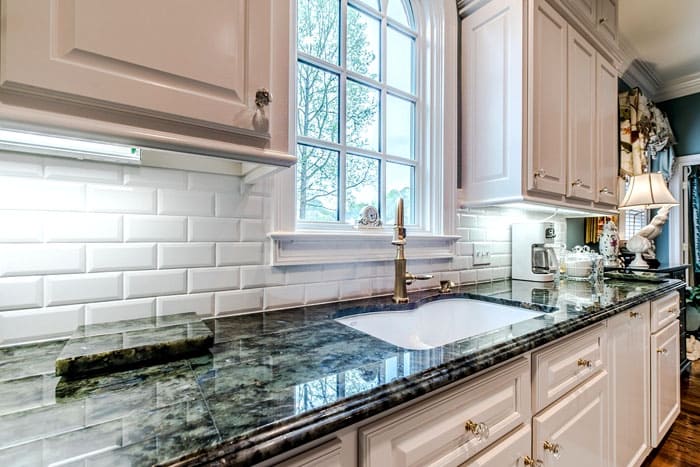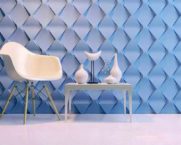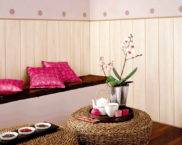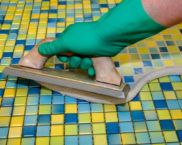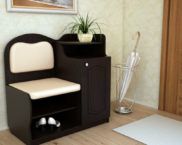Variety of kitchen apron designs from tiles: admiring the photo and interior
Tiled art in our century has become perfect: a huge variety of colors and textures have appeared. Now it is quite possible to choose different types of product surfaces for your favorite kitchen. But all this splendor of the assortment makes it difficult to choose. homemaster.techinfolux.com/en/ will help you find the best backsplash for your kitchen tile. Design, photos and all related information are waiting for you in this article.
The content of the article
- 1 Stages of cladding kitchen work surfaces
- 2 Why do you need a tile kitchen apron: the advantages and disadvantages of such a choice
- 3 Height and horizontal size of the backsplash for the kitchen tile
- 4 Which tile apron to choose for the kitchen: types of coverage, color, decorative qualities
- 5 Kitchen aprons made of tiles in design with photo examples: such a different interior
- 6 We figure out how to lay out a tile apron in the kitchen with our own hands
- 7 How much does it cost to lay out a tile apron in the kitchen - a review of prices for the summer of 2019
- 8 Video: how to lay tiles in the kitchen
Stages of cladding kitchen work surfaces
If we consider in detail the process of creating kitchen apron, three stages can be distinguished: calculation and purchase of material, preparation of walls, laying of tiles.
As for the purchase of tiles, they must be strictly from one batch. This is the only way to guarantee the same color. By the way, during the purchase, it will not be superfluous to check each package. In case of any complaints, it is possible that the next batch for facing will have to wait a long time.
It is better to remove the old coating from the working surface and level everything qualitatively. Apply under the tile plaster... No irregularities or crevices are allowed. The primed and completely dry wall is ready for installation.
Why do you need a tile kitchen apron: the advantages and disadvantages of such a choice
Why is ceramics in constant demand when choosing a material for an apron? It is not in vain that tile production has improved over the years. Today it is a material with great practical and aesthetic possibilities, as well as a high level of quality. Carefully executed styling lasts a long time, the products are quite wear-resistant.
There are practically no drawbacks to ceramics, except that sometimes you have to update grout between joints or just good to clean the space between the tiles.
The benefits speak for themselves:
- product care is the easiest;
- hot steam and fire will not deform the coating;
- chemicals do not have any effect on the tiled apron;
- splashes of boiling oil will not spoil the tiles;
- moisture does not harm the tile;
- the coating is durable.
Related article:
The best option for decorating the cooking area isaprons for the kitchen - skinali, photos of which are presented in our review. Why they gained such popularity, read on.
Height and horizontal size of the backsplash for the kitchen tile
Since everyone's rooms are different, as well as wishes, the dimensions of the kitchen backsplash from tiles will have to be determined by ourselves. If we talk about height, then the size of the hob, its type, hood, height plays a role here furniture set and the growth of who will use the kitchen the most. The height from the floor, at which the apron begins, ranges from 84-100 cm.
It should also be taken into account that the apron partially, by 20 mm, goes behind the countertop - this will protect the joints from dirt.
You can determine the width (it can also be called the height) of the apron zone by measuring the distance from the bottom of the headset with a table top to the bottom edge of the cabinets. Usually it is 110 cm.Therefore, approximately 112 cm is taken away for the width of the apron.
If the lower cabinets are located at a height of 85 cm from the floor, then the width of the apron is taken in the range of 48-117 cm.
Which tile apron to choose for the kitchen: types of coverage, color, decorative qualities
If you comprehensively consider the issues of choosing a tiled coating, then this will greatly facilitate the search for the right material. Let's talk about the types of tiles, colors and decorative possibilities of different models.
Beautiful apron: types of tiled cover
Today the market is replete with different formats and textures of tiles. The most common sizes are 30 × 30 cm², 30 × 40 cm. Unfortunately, this material requires frequent pruning. But the format 10 × 10 cm² leaves less waste, although it is quite laborious to fit.
A hog is an invariably popular type of tile covering. Rectangular products with slightly beveled corners look like beautiful bricks. This structure allows you to diversify the styling options. The size of a standard hog is 7.5 × 10 cm and 10 × 20 cm. These are glossy models made most often in a monocolor.
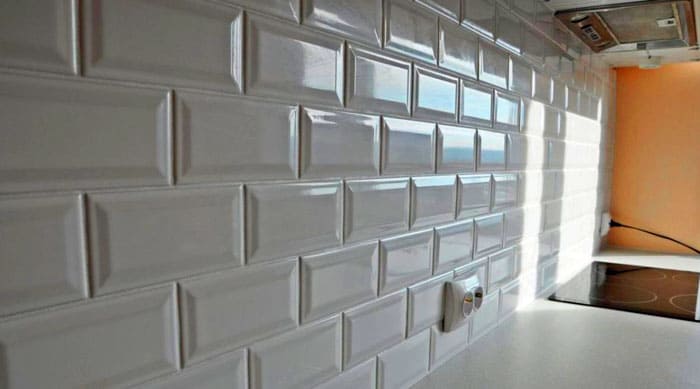
The hog tile on the kitchen apron, as in the photo, helps in the design of different styles
PHOTO: blog.postel-deluxe.ru
Admiration causes mosaic, which fits long and difficult. The result is usually impressive. To cheat and simplify your task, choose a tile "under the mosaic". From a distance, this is a full-fledged mosaic panel, deep cuts and convex elements become noticeable close up, which still looks beautiful.
Color solution
The style of the room and its color palette dictate the color of the tiles used. If you choose the tone of the tiles exactly to the tone of the furniture, there will be no interesting effect, the only exception is the Scandinavian style with its snow white.
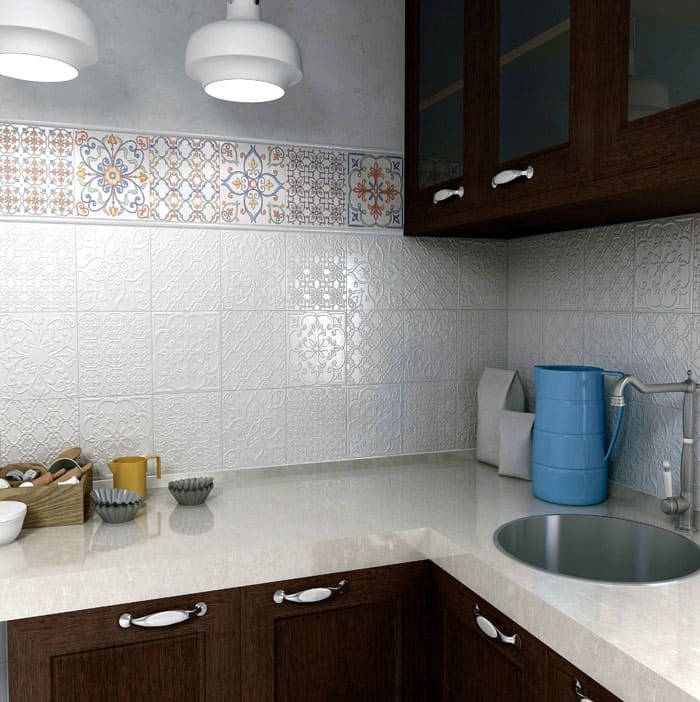
A nice looking apron is laid out of white tiles in the kitchen, which is confirmed by the photo
PHOTO: stroy-tehno.com
If the shades are related to each other, then, the main thing is not to get the fusion effect on perception.
In the first place are neutral tones, beige, variations of coffee shades.
The color of the apron can be matched by some kind of accessory, lamp, dining group. The main thing is not to overdo it and use this repetitive tone in small quantities.

Related article:
Kitchen apron made of plastic. Why do you need it, pros and cons, types, selection criteria, an overview of manufacturers and average prices, the subtleties of self-installation, useful tips - in our publication.
Decorative inserts: tile panels for the kitchen apron, relief and other options
Decorative inserts are most often already provided by the manufacturer, who produces a line of companion tiles. You can try to make an insert from another manufacturer, provided that the size and shape of the elements match.
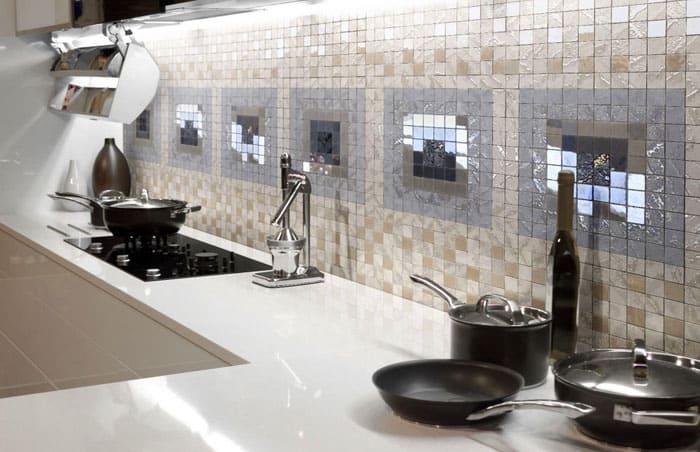
Glass or mirror tiles for the kitchen look original on an apron in the form of a mosaic
PHOTO: design-homes.ru
In order not to do something boring and dull, you can use the ideas of decorative inserts, but the cost of the apron will immediately increase. Let's see what options can be implemented:
Plots for insertion panels can be anything: from pastorals to food.
Related article:
Glass apron for kitchen. Catalog, photos, advantages, varieties, selection criteria, model range, do-it-yourself installation secrets, advice and recommendations of specialists - you will find in the material of our portal.
Kitchen aprons made of tiles in design with photo examples: such a different interior
The interior can be emphasized or spoiled by an illiterate choice and inappropriate tile laying. We offer the most successful tiling options.
Classics and country
The classics are good for their sophistication and simplicity at the same time. Products that resemble antique designs, marble patterns, simple tiles with terracotta or beige tones are suitable.
Country in the kitchen asks to add a painting, so decorative panels with pastoral subjects will be good. Patchwork can also be transformed into an apron covering.
Minimalism and loft
The minimalist interior will take on its beautiful sound with tiles in white, beige, sand, cream and gray. It is better to choose medium size, and only stylized drawings.
Loft will look good with a brick-like hog tile. But for this style there are also separate lines from different manufacturers, for example, from the Spanish brand Mainzu Legno.
Provence and Mediterranean style
Provence in the kitchen will also be favorably emphasized by a suitable apron design. As well as for country music, panels with rural motives, with dishes or food products are appropriate here. Mosaic panels of shades characteristic of the style will also ennoble Provence.
The Mediterranean interior is dominated by white and blue tones, and the deepest shades of blue should be sought. The same color combination is carried over to the apron coating.
Other interesting design options for aprons
We offer you to admire the photo gallery of beautiful aprons for the kitchen:
- PHOTO: dekoriko.ru
- PHOTO: kitchensinteriors.ru
- PHOTO: designmyhome.ru
- PHOTO: topdizz.com
- PHOTO: kitchensinteriors.ru
- PHOTO: dafix.ru
We figure out how to lay out a tile apron in the kitchen with our own hands
It's one thing to buy backsplash tiles in the kitchen. It is quite another to be able to lay it out beautifully and correctly. We understand the nuances of laying tiles.
Proper surface preparation and tooling
For work you need a punch, screwdriver with a mixer attachment, three different spatulas for glue, capacity 10 liters, building level, tile cutter and nippers, abrasive bar, rubber mallet, crosses and pegs, lanyard cord.
When everything is assembled, you need to clean the walls of old layers. A puncher will help here. Further, all irregularities are covered with plaster. After priming and drying, high-quality markings are made and the laying process begins.
Laying methods
Let's see the different options for finishing a tile backsplash for the kitchen.
Standard and diagonal
The standard way is the most familiar and suits different styles. This classic is called seam-to-seam. All tiles are identical to each other in each row.
The diagonal visually expands the space, especially if the product is monochrome. Inserts of a different color can add originality to the look.
Herringbone and staggered
If the products are laid at an angle of 90º, the result is a herringbone ornament. Tiles can be contrasting or plain. The Christmas tree also happens with an offset, when one tile goes beyond the middle of another.
Checkerboard styling is used if you need a contrasting color. For modern kitchens, these are black and white, dark gray and white, brown and sand, white and blue.
Vertical and horizontal
The rectangular hog can be laid out vertically or horizontally, with or without offset. Each method has its own adherents and opponents, the main thing is what effect will be obtained in the end.
How much does it cost to lay out a tile apron in the kitchen - a review of prices for the summer of 2019
Prices for work vary depending on the region. On average, if the ceramics are standard, the master will ask for about 800-900 rubles per 1 m²; for laying non-standard products, you will have to pay about 100 rubles more for each square meter. Mosaic laying without pattern matching costs 1200 m².
It should also be borne in mind that this cost does not include the preparation of the walls and grouting, they pay separately for the tiled border and baseboard, the chipping of the old tile.
As a result, the cost of the apron will be over 3000 rubles.
Will you contact the master or try to lay out the tiles yourself?



